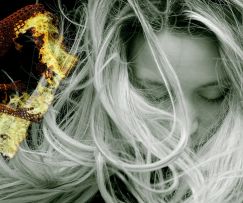 Many see “awakening” as a singular event, which changed their life and significantly redefined their identity. Some claim to be perpetually awakened. Some seem to believe that once was enough, and they live in the light of the historic event from then on. It’s all good.
Many see “awakening” as a singular event, which changed their life and significantly redefined their identity. Some claim to be perpetually awakened. Some seem to believe that once was enough, and they live in the light of the historic event from then on. It’s all good.
Whatever the claim and whatever the cost, no-one who has experienced an awakening would ever want to forget it. It has an essential quality, a depth of truth, a fearlessness and a vitality that is more important to them than any detail of outer life.
This post is an attempt to give an entirely subjective guide to the word “awakening”, what happens, how to allow it, and how to make more and more internal space for an awakened life. After all, all that could ever be between us and an awakening to deeper truth is in our control.
Of itself, the term awakening would seem to be in a dance of polarity with the word “sleep”. We awaken from something – a sleep, a state of illusion, a sense of not being quite alive, or not quite present. Yet this kind of awakening is not in polarity with sleep. Indeed, the Dalai Lama has said that “sleep is the best meditation”.
So what dream (waking or REM) do we awaken from in the mystical experience popularly described as awakening?
The experience of awakening has as many forms as there are experiencers, and often more. Yet as a guide, here are some pointers that tend to repeat.
1.Space from thought patterns
An experience of space between mental thought processes and the one (you) that witnesses the thoughts. A realization that these thoughts are utterly irrelevant to the one that witnesses, both in content and agenda. As such, the consciousness liberated of identification with thought gains a momentary freedom to “reset” attitudes, thinking habits and approaches to life. Unlimited possibilities can emerge.
2. Space from personal identity
Fundamental forms of identity, such as gender, name, background, race, age or nationality can become alien. Seen from an awakened perspective, these forms – once definitive of self – are no longer definitive. They fall away as vehicles in constant transformation that are powerless and irrelevant without the driver.
3. Space from the physical body
A fundamental belief that the self is contained, restrained by, and will die with the physical body collapses. The body becomes a non-problematic vessel that is not even a container of the awakened self. This can feel like we are visiting our selves from afar, arriving with a kind of wonder to experience this entity’s temporal placement in a physical human form.
4. The collapse of separation
Just as body, name, thoughts and identity no longer define the one that has taken an awakened glimpse at the miracle of being here, so do the borders between one individual and another, or between the separate self and its environment collapse. Where does the awakened self begin and where does it end? Liberated from limitation, the experience of oneness with all that arises within the field of perception can be a strong part of awakening.
A Paradox of Awakening
 How to awaken? Paradoxically, precisely those areas, listed above, from which we experience the strongest liberation, are the bridges to liberation. We don’t awaken by denying the body, our identity or our thought patterns. These are precisely the magical ingredients that set us free. Why? Because when we allow, truly allow, our consciousness or attention to turn to these forms, then they become realized as non-definitive. Every bridge is good, so take one that works for you and practise it.
How to awaken? Paradoxically, precisely those areas, listed above, from which we experience the strongest liberation, are the bridges to liberation. We don’t awaken by denying the body, our identity or our thought patterns. These are precisely the magical ingredients that set us free. Why? Because when we allow, truly allow, our consciousness or attention to turn to these forms, then they become realized as non-definitive. Every bridge is good, so take one that works for you and practise it.
1.Identity
Your birth name. This name, that signifies all you have been, according to you, according to others, and all you will ever be. The name you heard as a new born baby, before you had learned to believe in thoughts. Repeat this name to yourself. Is it familiar to you? How do you feel about the name? What meaning does this name have to you? What meaning does this name have to your mother or other close family member? Is this name who you are? So who are you?
2. Thought patterns
Yes, there are times when we all prattle away to ourselves inside our heads. We think we are doing something constructive, but actually we are hiding from thought itself. Thought is in the most part composed of silence, and as such, most verbal thinking is an act of repression or denial of the faculty of mind. Often it is an argument between various internal selves – such as one that is angry at the other for being weak or vulnerable. Which one is the real you? Which one do you stand for? If any? Who is watching the children play as they squabble?
Often, when we attend to the silence, our thoughts will at first become quiet, like children when the teacher has entered the classroom. But after a while they will sneakily start up again. The art is to stay as the curious witness. What is the miracle of a voice inside the head? What is the miracle of it’s content? Where are these thoughts arising from? Do we have the power to slow them down, for example, to look at an object without naming it, and watch how the name emerges out of the silence of the mind? How strong is the connection between the word and the “thing” (if any)? Where is the thought emerging from, and who is witnessing?
Thought patterns are also lost in time. Not real, linear clock time, but in a kind of chaotic gap where the true mystery of time is denied. Thoughts run from the past and they deny the future, while pretending to be actively preventing the past repeating by predicting the future, or changing the past, or controlling the future.
Yet who is this one at the heart of time? Who is the one that closed his or her eyes in bed as a child and wondered how she or he would ever fall asleep? Who is the one who is here now, beyond thought? Who is the one who will still be here, five years from now, regardless of all happenings or events? Who is the one who will gaze, sooner or later, into the pit of time at the moment of his or her death?
This one is the one that seeks to awaken in mental and physical form. This is the one that needs to awaken in time, the time of creation.
3. The body
It is a common spiritual message that you are not your body. This is fine, but limited. Denying the body is a reaffirmation of illusion, perpetuating more illusion. We don’t even know what the body is, or this mind-blowing miracle of transforming, living matter to which we are attached, and we already seek to deny it. Also scientists don’t know what it is, not the living miracle of an individual cell, and not even the wonder of an inorganic particle.
The allowance of the miracle of our being here, physically, is a major bridge to awakening. The only way we can access this strange, phenomena of being physically alive with legs on the ground and dangling arms, breathing oxygen in synergy with the environment is through allowing the changing, temporal, slightly freaky nature of physical sensation.
The shock of gravity, or the air on the face, of the blood in the veins, of physical areas of pleasure and pain, all of this is awakening. We are taught to believe it is nothing, but the way of experiencing the body is endless. And when we are done with the substantial part, it can get even more habit-blowing when we begin to inhabit the emptiness in our bones, the emptiness between sensations, the emptiness in the head, the emptiness of the universe.
We are not the idea we have of a body. But when we truly allow the experience of a body, then the very border between body and spirit dissolves. This can create a panic in the nervous system, often confused with awakening itself, which will relax over time, as awakenings normalize through deepening degrees of embodiment.
4. Separation
Yes, we are hardwired to separate ourselves from inside-out. Using various layers of form and identity to give the appearance of independent existence. Yet when we deeply contemplate the “other”, its otherness will often collapse into unity. The idea of separation can only survive through unconscious programming, it can never survive direct, honest inquiry. Most of the “otherness” we experience is an effect of imagination – the tricky part of mind that bypasses lingual thought processes and throws up pictures worth a thousand words to cement an illusion of separation. Don’t believe in it. Also, the imagination can be realized as a miraculous faculty that says nothing at all about truth or reality.
We are not separate from anything we perceive, nor from perception itself. Try this short exercise to open up a little inquiry. Take an object on the other side of the room. Bring your attention to your (as if) separate self, and then bring your consciousness fully to the object. Switch between your self and the object for some time. After a while, relax your vision to include all the objects in the room. Where are you now?
The Advantages of Awakening
 From the perspective of an awakening, it seems utterly insane to go back into the world of illusion. Such is the liberation, joy, potential, freedom and sense of endless energy, which awakening causes. And yet we do sink back into habit and programming, for the purpose of healing. We even go back to seeking the distractions of entanglement and attachment in order to actively avoid awakening, as if awakening hurts. And sometimes it does.
From the perspective of an awakening, it seems utterly insane to go back into the world of illusion. Such is the liberation, joy, potential, freedom and sense of endless energy, which awakening causes. And yet we do sink back into habit and programming, for the purpose of healing. We even go back to seeking the distractions of entanglement and attachment in order to actively avoid awakening, as if awakening hurts. And sometimes it does.
Also our pain, shock and trauma are in the here and now. Also the memories we have repressed perhaps for decades. We have good survival reasons to choose for illusion as a short term deterrent of unwanted pain.
This is a strange phenomena, which should be treated with internal kindness. We are also not just carrying our own identities, we are carrying the identities of the whole, generations forward and backward, and the atmospheres of one humanity.
Yet each time we awaken again, we are of service to the whole and to ourselves. Each time we follow the path out of the illusion of false identification, we open a thread of light directly into the human dimension, and we become by degrees more free.
The pain we fear in awakening is old pain, and by degrees, through awakening, this pain will heal, in a way that the memory is kept and the experience becomes a liberated source of wisdom to help others. We don’t need to wait until suffering knocks at our door again to open the door of awakening and restoration of our natural human freedom.
By degrees, we find we can awaken as a choice and as a practise. This means increasing freedom from the suffering of ego, rejection, shame, and above all fear. This brings a vast increase in joy, pleasure and freedom of mind. We become less reactive and less cruel.
After a while, we will look back several years and be amazed at how life began, in the moment we agreed to let it, by allowing the miracle of being here, and being so much more than that.
Previous experiences of awakening can help us move back out of form. But they don’t count anymore except as sign posts left on an old path. Awakening can’t be held or claimed. It can’t be controlled or worn as an acquisition of character. Awakening can only be facilitated as a constant choice, each time unique, each time momentous, each time opening something fresh as a precious gift to the planet.












